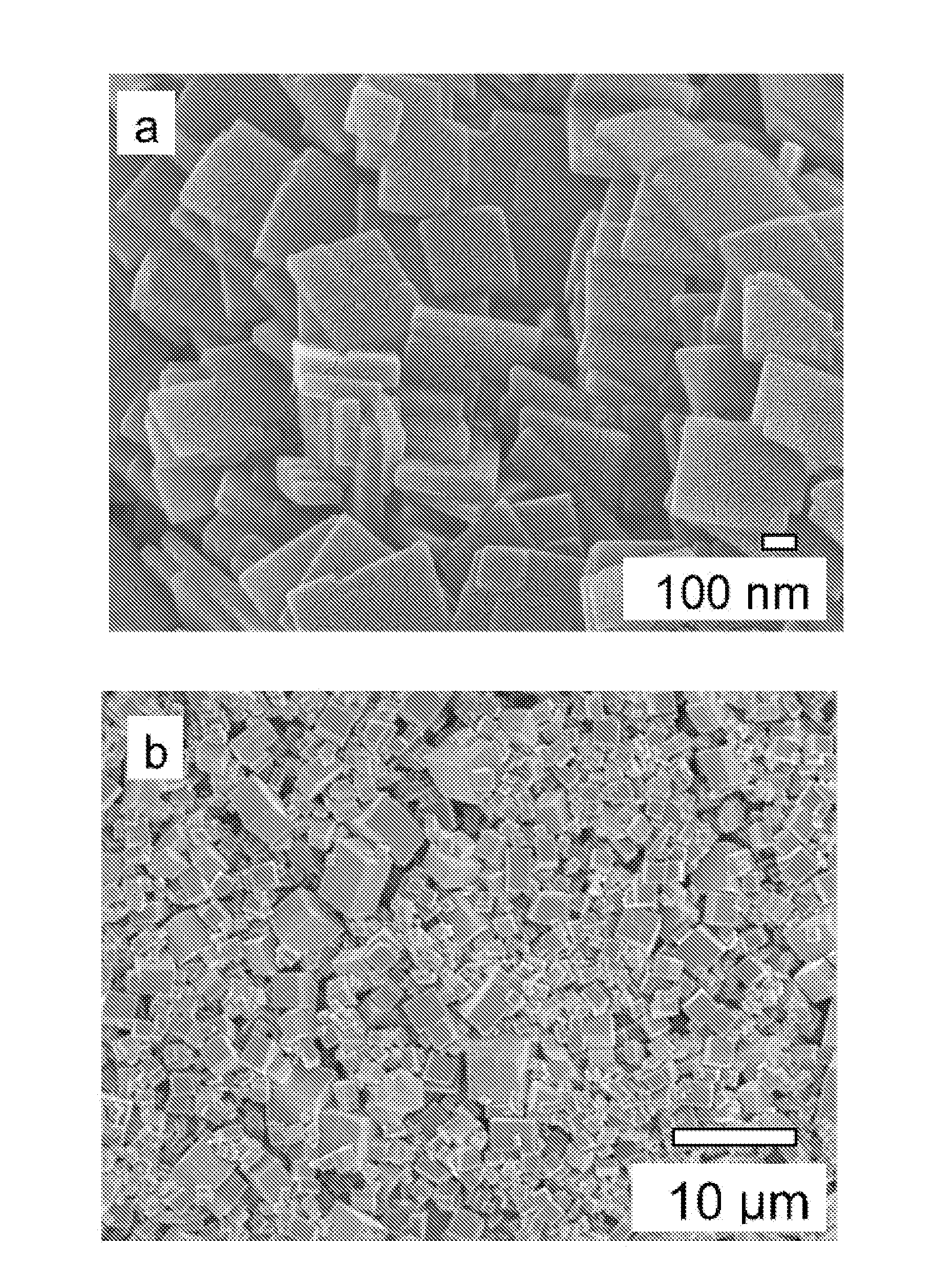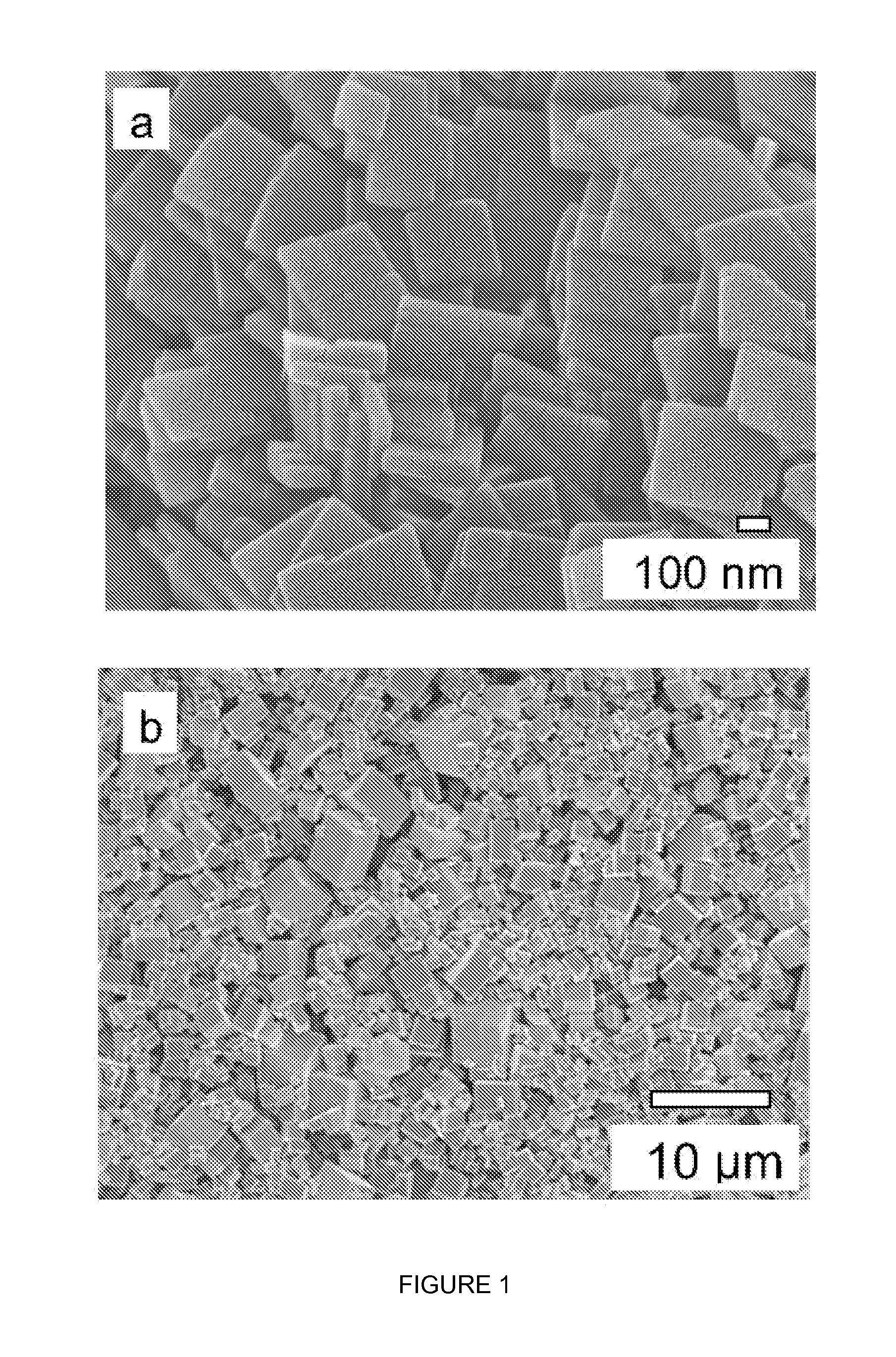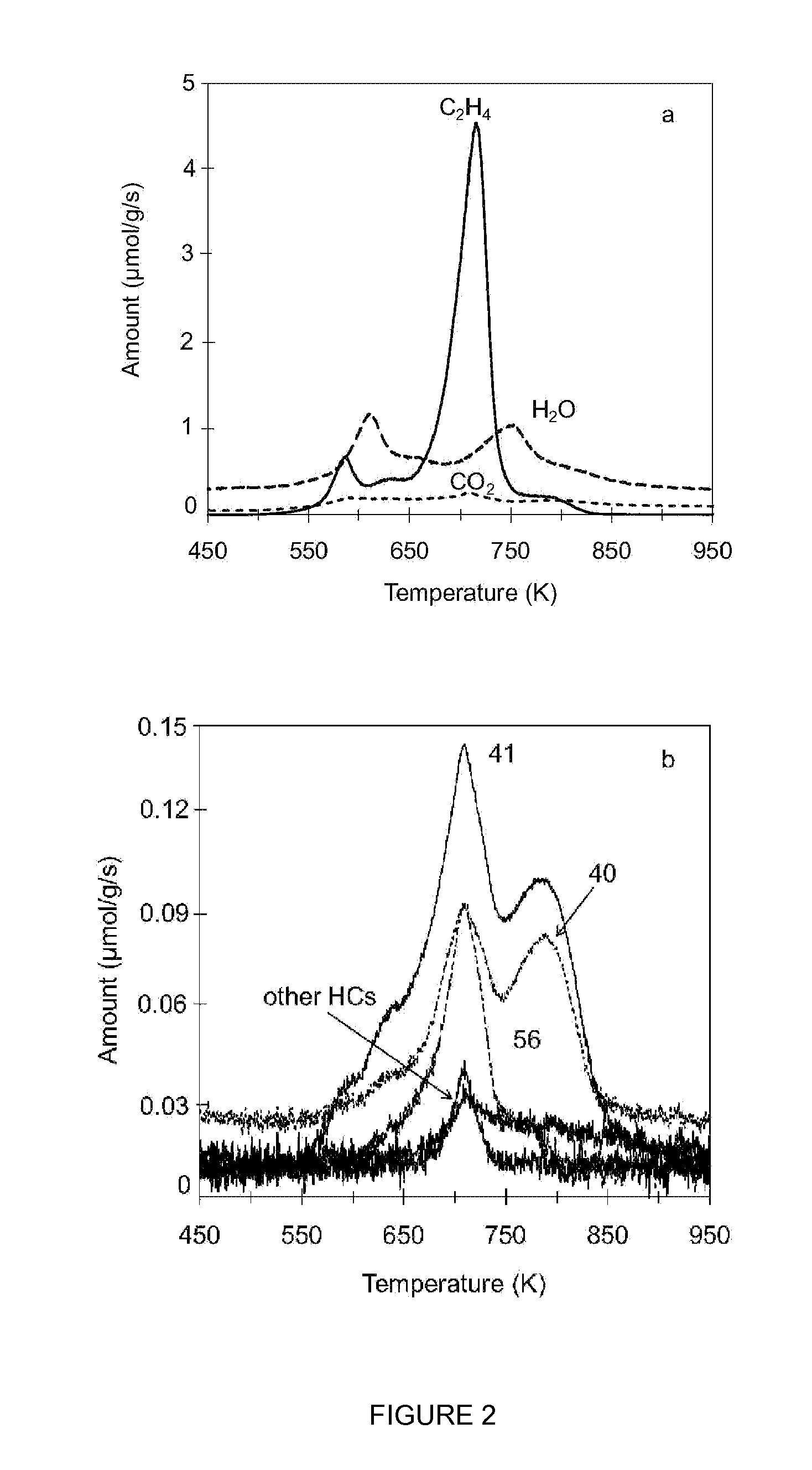High flux sapo-34 membranes for co2/ch4 separation and template removal method
- Summary
- Abstract
- Description
- Claims
- Application Information
AI Technical Summary
Benefits of technology
Problems solved by technology
Method used
Image
Examples
example 1
Synthesis of Membranes
[0089]1. Seed Synthesis
[0090]The SAPO-34 membranes were prepared on tubular supports that were first seeded with SAPO-34 crystals. The membrane synthesis gel used to grow the seed crystals had a molar ratio of 1.0 Al2O3: 2.0 P2O5: 0.6 SiO2: 4.0 TEAOH: 75 H2O, where TEAOH is tetra-ethyl ammonium hydroxide. To prepare the seeds, the Al(i-C3H7O)3 (98%), H3PO4 (85 wt % aqueous solution), and deionized (DI) H2O were stirred for 3 hours to form an homogeneous solution, and then Ludox AS-40 colloidal silica (40 wt % SiO2 suspension in water) was added, and the resulting solution was stirred for another 3 hours.
[0091]The TEAOH templating agent (35 wt % aqueous solution) was then added, and the solution was stirred overnight at room temperature. The solution was then placed in an autoclave and heated in a microwave oven (CEM Mars Microwave Reaction System with XP-1500 plus reactor) at 453 K for 7 hours. After the solution cooled to room temperature, it was centrifuged a...
example 2
Template Removal
[0096]The templates were removed from the SAPO-34 membranes under vacuum, in flowing N2 (an inert gas under these conditions), in flowing air, and in stagnant air. The gas flow rates were 50 cm3 / min. The membranes were heated to and held at 673 K for 4 hours with a heating rate of 0.8 K / min. They were then cooled to room temperature at a rate of 0.8 K / min. For template removal under vacuum, a vacuum chamber with a pressure of approximately 10−7 kPa was connected to a quartz tube, and the membranes were placed in the tube.
[0097]The templating agents were removed in flowing N2 or air in a 1-m long and 1.5-cm diameter aluminum tube, which was centered in a ceramic tubular furnace with 7.5-cm ID. Membranes with ceramic rings wrapped around the glazed edges were placed at the center of the quartz or aluminum tubes. Al2O3-supported membranes were also calcined in stagnant air at 673 K for 4 hours in the ceramic tubular furnace.
example 3
Temperature Programmed Desorption and Oxidation
[0098]Temperature-programmed desorption and oxidization (TPD, TPO) were carried out in flowing helium (TPD), air (TPO), or O2 (TPO). The SAPO-34 crystals that were used in TPD and TPO were collected from the bottom of the autoclave after membrane synthesis. One hundred mg of SAPO-34 crystals were placed on a quartz frit in a quartz tube. Gases flowed through the reactor at 50 cm3 / min, and their flow rates were controlled by mass flow controllers. The quartz tube was surrounded by an electrical furnace, which consisted of NiCr wire wrapped around a quartz cylinder. A thermocouple was placed in the center of the SAPO-34 samples, and the temperature was increased at a constant rate of 10 K / min to 973 K for TPD and TPO measurements. For one TPD, a membrane was used instead of SAPO-34 crystals, and the temperature was increased at a rate of 0.8 K / s to mimic the conditions used during template removal
[0099]The effluent from the reactor was mo...
PUM
 Login to View More
Login to View More Abstract
Description
Claims
Application Information
 Login to View More
Login to View More - R&D
- Intellectual Property
- Life Sciences
- Materials
- Tech Scout
- Unparalleled Data Quality
- Higher Quality Content
- 60% Fewer Hallucinations
Browse by: Latest US Patents, China's latest patents, Technical Efficacy Thesaurus, Application Domain, Technology Topic, Popular Technical Reports.
© 2025 PatSnap. All rights reserved.Legal|Privacy policy|Modern Slavery Act Transparency Statement|Sitemap|About US| Contact US: help@patsnap.com



